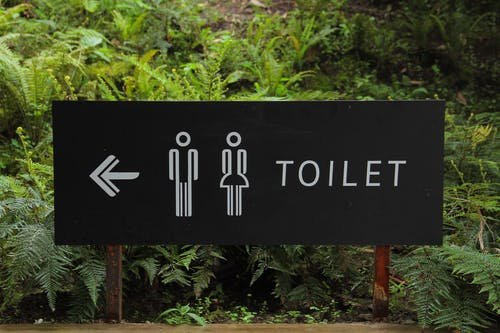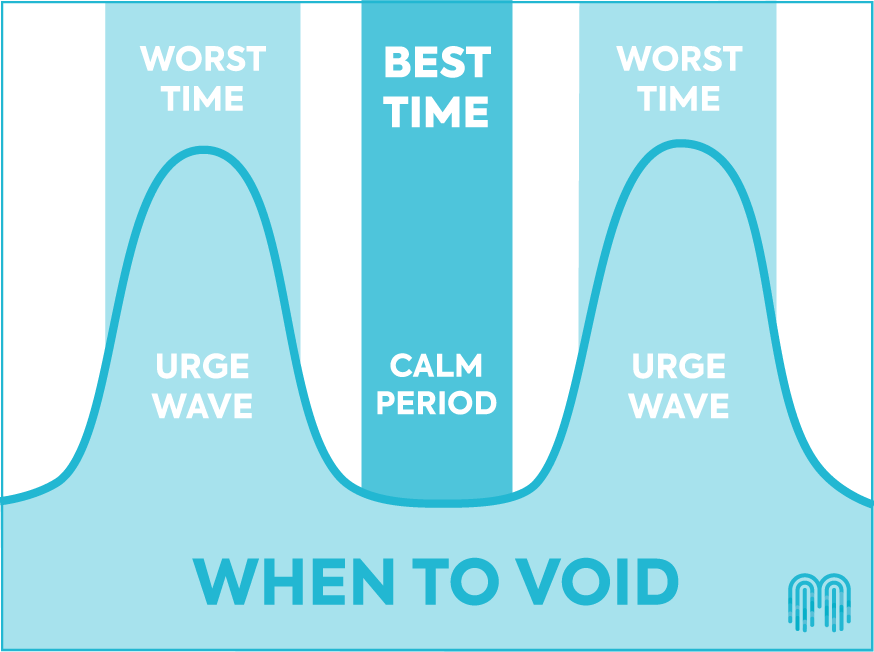Control of our bladder and bowels are some of our most primal functions as humans and when something goes awry with those systems, it can be especially defeating for us. One cause of urinary or fecal incontinence can be due to what is called “urge incontinence”, which refers to leakage occurring when one cannot control a strong urge coming from their bladder or bowels and can’t make it to the bathroom in time.
While a pelvic floor physical therapist is essential in determining your root cause of urge incontinence, whether it is due to a pelvic floor that is weak, uncoordinated, or too tense, there are some tips and techniques to help control your urges.
The anatomy and physiology of our bladder and bowel elimination systems differ and therefore so do techniques to control their urges.
The Bladder:
As our bladder fills to a certain level, our detrusor muscle of the bladder will contract telling our internal urinary sphincter to relax. This signals our voluntary external urinary sphincter to contract if we do not want to pee at that time. The best way to retrain these urge waves is to not reward it by peeing when the urge is its highest. Peeing during the “calm period” can help retrain our brain-bladder connection. Techniques for urge suppression to help decrease leakage:
Move slowly and don’t run to the bathroom- moving quickly will increase the feeling of panic and can ramp up our nervous system leading to increased urge, as well as decreases the control of our pelvic floor musculature as we move quickly
Take a few deep diaphragmatic breaths- this calms down our nervous system to calm down urge
Perform 10 quick pelvic floor contractions (or “Kegel’s”)- this sends the signal to our bladder to relax and turn off the urge to urinate
Now try to wait 5 minutes if you can before peeing
The Bowels:
As our rectum fills, it cues our internal anal sphincter, which is under involuntary control, to relax as our external anal sphincter contracts to prevent the release of stool until we are in an environment to do so. One way bowels differ from the bladder is that we want to honor our natural urge to release stool. As long as we are in an environment to do so, we should release our bowels when our body signals that we have to. Dysfunction can arise when the urge is so strong it leads to fecal incontinence and an inability to make it to an appropriate environment to release our bowels. How we can gain control of this involves something called our Rectoanal Inhibitory Response (RAIR). With a proper contraction of our external anal sphincter, we can signal our internal anal sphincter to contract and override the urge to have a bowel movement. This technique differs from bladder urge suppression. To activate the RAIR and suppress a bowel movement:
Practice near a toilet when the urge hits
Contract your anal sphincter (think “squeeze your anus shut”)
Hold the contraction for 60-90 seconds!- A long and submaximal hold is key to signal the internal anal sphincter to re-contract and shut down the urge to have a bowel movement
Follow up with one of our pelvic floor physical therapy experts to help master these techniques and to discover your main drivers of bladder or bowel urgency.
References:
Rao, S. S., et al (2015). ANMS‐ESNM position paper and consensus guidelines on biofeedback therapy for anorectal disorders. Neurogastroenterology & Motility, 27(5), 594-609.
Pal M, et al. Urge suppression and modified fluid consumption in the management of female overactive bladder symptoms. Urol Ann. 2021;13(3):263-267.


